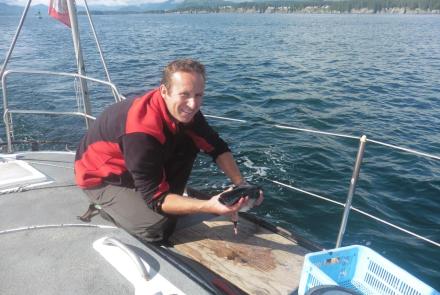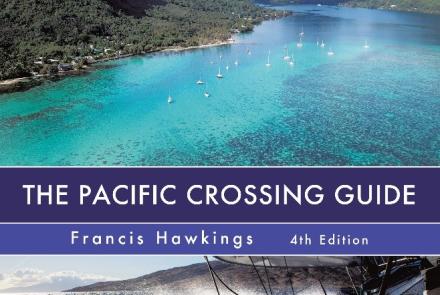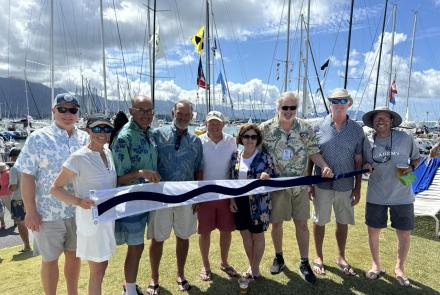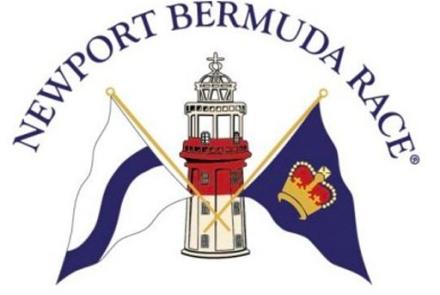Classic yachts stole the spotlight at last year’s St. Francis Yacht Club’s Rolex Big Boat Series, and Cruising Club of America members Terry Klaus, Beau Vrolyk, and Dewey Hines earned the top three spots on the podium.
This article was originally published on the Offshore Racing Rule website to highlight the use of the ORR-Ez handicapping rule, which along with the ORR rule, is supported by many CCA members. The article has been adapted from the original.
“We went back to the way Big Boats was run 60 years ago,” said Beau Vrolyk, owner of the Alden schooner Mayan and a director at the St. Francis Yacht Club, host of the event. “We started and finished in front of the clubhouse so there was a big spectator value. When the starting gun went off, bar patrons would turn to the window and see five boats on starboard tack, heading straight for the bar.”
Terry Klaus's Herreshoff-designed Brigadoon, on the wind
Vrolyk and his chief rivals in the series, Terry Klaus and Dewey Hines, are all members of the San Francisco station of the CCA. Klaus and Vrolyk are regular racers and although Hines hadn’t been on the racecourse for years, he had an excellent crew and engaged in the tactical battle to start at the outer end of the line.
In one memorable start, according to Vrolyk, the whole fleet was on the line and the boats farthest to leeward had to call for sea room right away. Meantime, a fleet of J/105s came sailing in amongst the classics—but wisely avoided the larger boats! This was all good entertainment from the shoreside perspective, and fortunately, all boats sailed on unscathed.
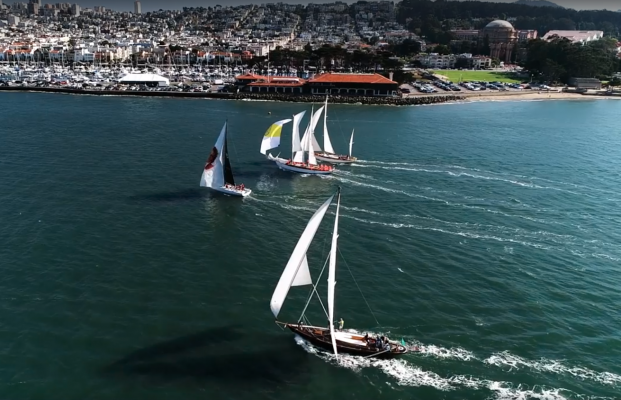
Beau Vrolyk's Mayan (yellow chute) finishes off St. Francis YC, seconds ahead of Ocean Queen (farthest inshore) and Water Witch (foreground)
The first Classics race of the series also had a photo finish. “We had a 48-foot sloop, a 56-foot yawl, and our 59-foot schooner crossing tacks all over the bay,” said Vrolyk. “After sailing for 12 miles, we ended up overlapped at the finish. It was one of the most fun races we’ve done in years.”
The boats, all built before 1955 and measuring at least 48 feet on deck, were handicapped and scored using the ORR-Ez rule. Corrected finish times were close in all but the windiest races, when limited sail inventories and equipment challenges spread out the fleet.
ORR-Ez normally uses owner-submitted design data, but to help rate some of these classic boats, Offshore Racing Rule (ORR) Technical Director Jim Teeters tracked down lines plans in the archives of Mystic Seaport and MIT. He also observed the regatta and held a meeting with the owners to explain how the VPP rule works across different course configurations and wind strengths, as well as its subjective side.
“Given the age and construction and rig design of these boats, all were receiving some adjustment,” said Teeters. “At the owners’ meeting, I mentioned that this event was really a ‘calibration run’ for the class.”
Dewey Hines' Ocean Queen leads Mayan upwind
The series had four races, with the first held in light wind and the last in the strongest breeze. Courses typically included a mix of upwind, reaching and running, and St. Francis YC’s race committee matched the configurations by utilizing ORR-Ez’s GPH rating, which assumes equal distances sailed at all wind angles. Despite a fair amount of upwind work, the schooners in the class, Brigadoon and Mayan, were extremely competitive, and races were often decided by less than a minute.
In fact, the two schooners corrected out to first and second in each race, and Terry Klaus’ Brigadoon, a 1924 L. Francis Herreshoff design measuring 50 feet on deck, won the series. Given that the two boats were the most race-tested vessels in the class and were flying the newest sail inventories, it’s no surprise that they performed best. However, the time spread was often small, with Dewey Hines’ 54-foot yawl, Ocean Queen, usually closest.
Hines hadn’t planned to race his Philip Rhodes design in the series, but Vrolyk made a bar-stool offer Hines couldn’t refuse; in exchange for ponying up the entry fee, Hines got two drinks and Vrolyk’s designated helmsman, Paul Cayard.
Cayard, the former America’s Cup helm and current chair of the board at St. Francis, is also a promoter of classics racing, and good naturedly moved from the helm of Mayan to the foredeck on Ocean Queen.
Racing with old sails and no practice, Hines scored three thirds and then retired from the windy fourth race when the water was coming in a bit too fast. “We’re coming for you,” he told Vrolyk after the regatta.
Mayan and Bounty duke it out
While the 2020 regatta was canceled, Vrolyjk has been drumming up interest in a bigger fleet for the 2021 event. He hopes Southern California classics will make the trip north to sail not only the Big Boat Series but also the Belvedere Cup (formerly the Great Schooner Race) and the Master Mariners Regatta.
In the meantime, he said, “We’re continuing to torture fellow big-boat owners with photos of how much fun it was.”
—John Burnham


